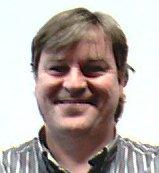
KEYNOTES
Keynote 1: Tuesday morning

Cloud Computing: why 10 years?
John Manley, Director Automated Infrastructure Lab, HP Labs
Bio
John Manley is director of the Automated Infrastructure Lab at HP Labs, exploring technologies that enable dynamic cloud computing – that is, service-oriented computing on an internet scale for both enterprises and individuals. His team has been creating prototypes of cloud and utility computing systems for more than eight years, focusing principally on managing the lifecycles of virtual systems bu
ilt on federated infrastructures and the lifecycles of applications delivered as services. The initial focus was on high-performance computing applications such as CGI-rendering for the animation industry, which led to HP offering a utility rendering service to DreamWorks. More recently the focus has been on enterprise transactional applications, in particular SAP.
Manley joined HP Labs in 1985 to work on knowledge-base management systems that allowed the storage andretrieval of much richer forms of information than are handled by database management systems. This work evolved to focus on enabling the meta-level treatment of federated, heterogeneous information sources. In the early 1990s, he moved on to manage a team researching the scalability aspects of Telecommunications Management Network. This work led to technology transfers to the HP OpenView and telecommunications platform businesses. More recently, Manley led research in a number of IT fields, including communications technologies and very large-scale systems such as voice over IP, web collaboration, 3D environments and notification systems. He holds a Ph.D. in molecular quantum mechanics from the University of Bristol.
Keynote 2 : Tuesday morning

Stalking the Wily Homunculus and other Adventures in Network Management
John Day, Boston University
Abstract
The keynote will take a personal look at attempts to develop Network Management from the early achievements of the ARPANET through major advances in the mid-1980s associated with IEEE and the subsequent regression into a dark age. Historically, there were three major insights that contributed to finding a network management architecture: modeling on nervous systems, maximizing commonality across structures, and the recognition that management is "monitor and repair but not control." While much progress was made in the 1980s, fundamental flaws in the network architectures of the time were an impediment to progress. Now with architecture models, e.g. RINA, that scale, a full addressing architecture, and considerably more commonality across layers, there are new opportunities for new insights into the nature of networks and to make significant progress in their management. And just a bit about how this model is a specialization of a more general distributed application model with the potential to uncover new insights and management capabilities for distributed applications.
Bio
John Day has been involved in research and development of computer networkssince 1970, when they were the 12th node on 'Net. Mr. Day has developed and designed protocols for everything from the data link layer to the application layer. Also making fundamental contributions to research on distributed databases. He also did work on the early development of supercomputers and was a member of a development team on three operating systems. Mr. Day was an early advocate of the use of Formal Description Techniques (FDTs) for protocols and shepherded the development of the three international standard FDTs: Estelle, LOTOS, and extending SDL. Mr. Day managed the development ofthe OSI reference model, naming and addressing, and a major contributor to the upper-layer architecture; he also chaired the US ANSI committee for OSI Architecture and was a member of the Internet Research Task Force's Name Space Research Group.
He was a major contributor to the development of network management architecture, working in the area since 1984 and building and deploying a network management system, a decade ahead of comparable systems. Recently, Mr. Day has turned his attention to the fundamentals of network architectures and has published Patterns in Network Architecture (Prentice Hall, 2008), which has been characterized (embarrassingly) as "the most important book on network protocols in general and the Internet in particular ever written." Mr. Day is also a recognized scholar in the history of cartography, and has published on 17th Century China as well as contributing to exhibits at the Smithsonian.
Keynote 3: Thursday morning
Managing the Next Wave of Mobile Broadband Networks
 Matt Hamilton, Director, Systems and Technology for Mobile Network Management Products, Ericsson
Matt Hamilton, Director, Systems and Technology for Mobile Network Management Products, Ericsson
Abstract
Ubiquitous mobile broadband coverage and the emergence of smart phones have transformed the services and data being carried on mobile networks. Mobile operators will offer differentiated services in this second wave of mobile broadband, with customers being able to choose subscription models that best suit their service usage. Another emerging trend is the use of mobile networks to provide device connectivity with billions of devices attached to the network.
This talk will describe the consequences of these trends for management of mobile networks, explaining how management systems are evolving to cope with these changes. The talk will go on to present some of the opportunities that lie ahead for mobile network management and set out some of the key technical and research challenges facing this area of management.
Bio
Matt Hamilton is director of Systems and Technology for Ericsson’s Mobile Network Management products. He is responsible for technical strategy, architecture, planning, and standardization activities of Ericsson’s global suite of network management products for mobile access and core networks. Matt is also responsible for co-ordination of technical strategy across all of Ericsson’s OSS products. Matt also directs Ericsson’s research activities in network management, specifically in the areas of visualization, service assurance, and system interoperability.
Prior to his current role, Matt has held many strategic technical roles in Ericsson, including leading a team that pioneered the use of model driven approaches for development of software for Ericsson’s switching systems. Matt also made important technical contributions in the transition from proprietary to open platforms for O&M on those systems.
Matt holds BSc in Physics from the National University of Ireland, Galway.
Keynote 4: Thursday morning
Information-Centric Networking: Overview, Current State and Key Challenges
George Pavlou, Professor of Communication Networks, University College London

Abstract
Information-Centric Networking (ICN), also referred to as content-centric, content-aware or data-oriented networking, is seen as an emerging paradigm that tries to re-focus communications, centering on content access rather than on host-to-host interaction as is the case today. The proliferation of user-generated content and the fact that the vast majority of interactions over the Internet concern media content access has led researchers to think of new communication models in which information/content comes on center stage and is accessed in a location-independent fashion; in addition, the underlying network is aware of the content characteristics and optimizes delivery accordingly. The resulting communications paradigm is receiver-driven, with “time-phased” multicasting and in-network caching being the norm. The network infrastructure becomes more intelligent, with application logic potentially executing within the network in order to support demanding media applications that are not possible today. This presentation will start with an overview of information-centric networking, it will present the state-of-the-art in the relevant research activities and will consider the current state and key challenges. The management challenges of the expected fluid and more dynamic network infrastructure will also be specially considered.
Bio
George Pavlou is Professor of Communication Networks in the Department of Electronic and Electrical Engineering, University College London, UK, where he coordinates activities in networking and network/service management. Before re-joining UCL in the beginning of 2008, he was for ten years (1998-2007) Professor of Communication and Information Systems in the Department of Electronic Engineering, University of Surrey, UK. He holds a Diploma (MEng equivalent) in Engineering from the National Technical University of Athens, Greece, and MSc and PhD degrees in Computer Science from University College London. His research interests focus on networking, network management and service engineering, including aspects such as traffic engineering, quality of service management, policy-based systems, autonomic networking, information-centric networking and communications middleware. He has been instrumental in a number of collaborative research projects that produced significant results and has contributed to standardization activities in ISO, ITU-T and the IETF. Prof. Pavlou is currently the Vice Chair of IEEE CNOM and has been the technical program co-chair of the 7th IFIP/IEEE Integrated Management Symposium (IM 2001) and the 10th IFIP/IEEE International Conference on Management of Multimedia and Mobile Networks and Services (MMNS 2008. He has published extensively and has given invited talks and tutorials in major international conferences. See http://www.ee.ucl.ac.uk/~gpavlou/ for more details on his research activities and his publications.
